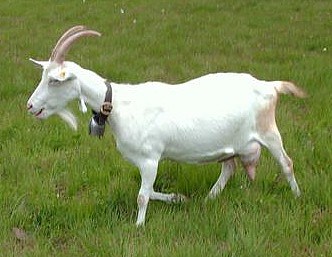Type the name of the breed you're looking for below
[wpdreams_ajaxsearchlite] Don't see the breed your're looking for? Click here and let us know!
Saanen goat
| Place of Origin | Switzerland |
| Origin | Saanen goats are a white or cream-coloured breed of goat, named for the Saanen valley in Switzerland. By the late 19th century they had spread across Europe, and in the early 20th century were brought to the US. In the 21st century, they are among the most popular dairy goat breeds, due to their high productivity and ease of management. |
| Purpose | Milk |
| Characteristics | Saanens are the largest of the goat dairy breeds, and one of the largest milk producers. Does typically weigh at least 135 pounds (61 kg) and stand 30 inches (76 cm) tall, with bucks weighing at least 160 pounds (73 kg) and standing 32 inches (81 cm). The profile of the head is straight or dished (concave), with erect, forward-pointing mid-sized to large ears. Saanen does are known for their ease of management in herds, mellow temperaments and adaptability, as well as their production abilities. Their milk generally has a butterfat content of 3-4%. Saanens are generally white or cream-coloured, although breed associations prefer pure white. Their coats are usually short and fine, with occasional longer fringes on the back and hindquarters. Due to their light colouration, they can be sensitive to harsh sunlight and hot climates. Darker-skinned animals are better able to handle these conditions. The Sable Saanen is not a crossbreed, but is a recessive expression of colour derived from the white Saanen. Sables can vary in colour from beige through black, with almost any colour but pure white (which would be a white Saanen). Sables are accepted as a breed in their own right in some dairy goat breed clubs, but not in others. |
| Other Considerations | Sable Saanen Goats are descended from Saanen goats brought to America by Europeans. In 2005, the Sable was recognized as a separate breed. Before they were recognized as a separate breed, they were often culled. They are color variations of Saanens due to a recessive gene; they are sometimes referred "the Saanens in party clothes". Sables can come in a variety of colors, including black, brown, and grey. They may have white colourings, but are not permitted to be solid white, as that would be no different from a normal Saanen. Sables are recognized by the American Dairy Goat Assiocation (ADGA). |



